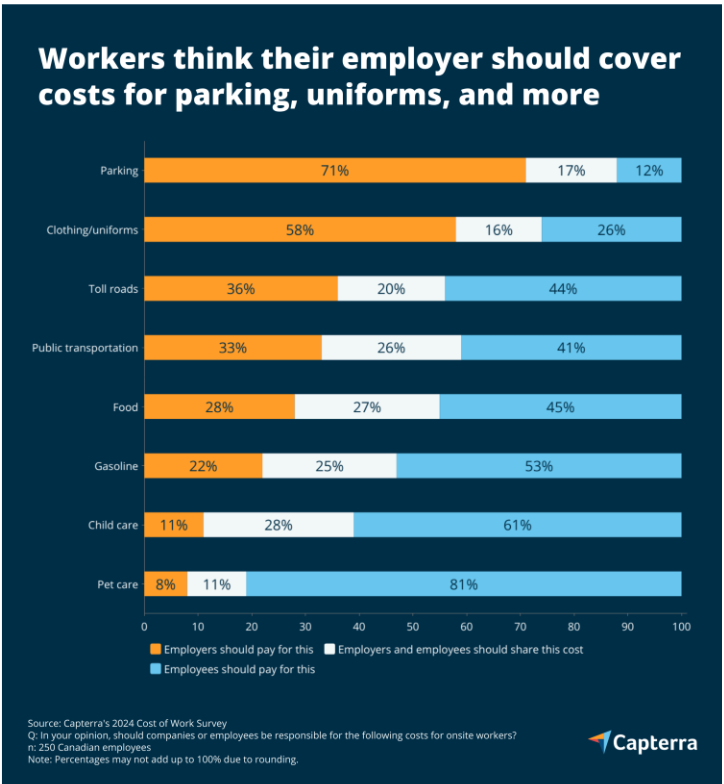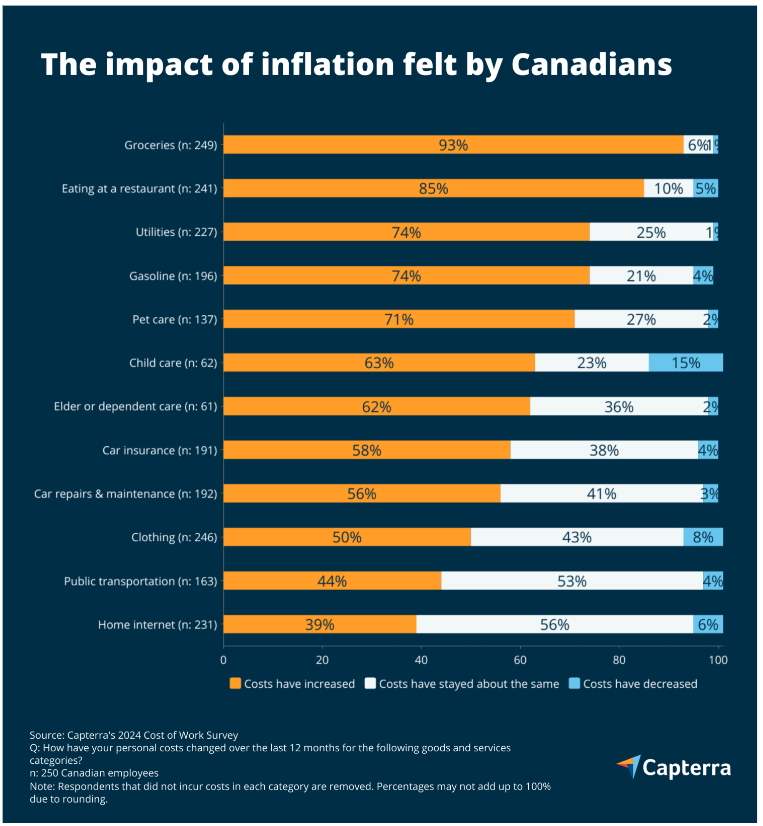Some employees want companies to cover expenses related to parking, clothing, toll roads, finds report

Mandating employees to return to the workplace full time could be costly for employers, according to a report from Capterra.
Overall, 68 per cent of employees say they would look for a new job if they had to spend more of their own income to come to work than they feel reasonable.
Nearly two-thirds (64 per cent) also say they would ask their employer for a raise if they are required to return to the office full time.
Toronto has the smallest median employment income among the 15 largest metropolitan states in Canada and the United States, according to a previous report from the Fraser Institute.
What is the cost of going into the office?
Employers can choose a much cheaper option if they want workers to return to the office full-time, but they will still have to shell out some cash, according to Capterra’s 2024 Cost of Work Survey, which collected 250 responses from Canadian employees.
They can do this by employing a cost-sharing setup. Currently, workers want employers to cover at least part of the following expenses that they have to pay to report to the office:

Source: Capterra
“What was once a foregone conclusion – employees pay all the costs to be at work – can no longer be assumed,” says Brian Westfall, associate principal analyst for Capterra. “If you’re an HR leader or other executive charged with motivating your company’s workforce to return to the office, you may need to share at least some of these costs with your employees.”
Employers can also do the following, according to Capterra:
- Reduce costs through flexible policies and on-site events.
- Help employees budget better through financial wellness programs.
- Offset costs to be at the office by reducing hybrid and remote worker compensation.
On average, Canadians spend $26 per day and $6,760 per year to go to the office full-time, according to a report released in 2022.
Currently, employers are struggling with their finances, according to Capterra.
That’s because inflation has resulted in increased costs for workers:

Source: Capterra
And 81 per cent of workers say their wage or salary has not kept pace with inflation to compensate.
“All told, 61 per cent of Canadian workers in our survey say the personal financial cost associated with their current job has increased in the last 12 months. Because they incur both on-site and remote costs to work, hybrid employees (70 per cent) have been hit particularly hard compared to fully on-site (60 per cent) or fully remote (43 per cent) employees,” says Westfall.
“Post-COVID, employers have raised their wages rapidly to attract and retain talent. But rising costs, such as those for rent, have eaten into wage gains and made them less sufficient to cover higher expenses to be in the office.”
Financial compensation emerged as the top priority for professionals in different fields, according to a previous study.
How many people still work from home in Canada?
Forcing workers to be in the office full-time is not a good idea, according to Capterra’s report.
Thirty-six per cent of Canadian workers now work at a company office, store, or other workplace full time, despite only nine per cent saying this is their preference. Meanwhile, only 22% of workers are working fully remote, even though 54% prefer this option.
Of the 21 per cent of employees who are required to work more days on-site at a company workplace now than they did a year ago, 80 per cent feel negatively about it.




